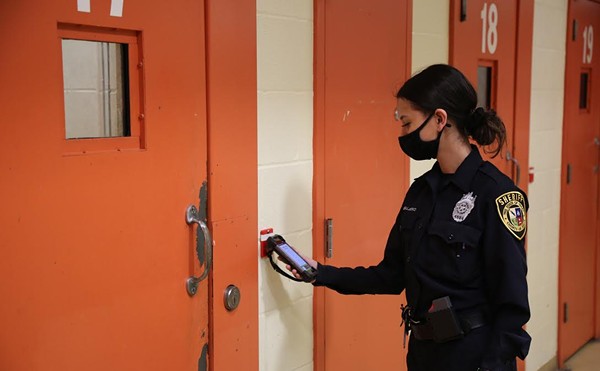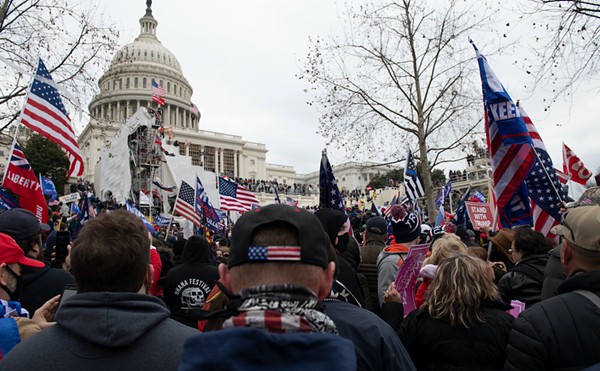
And Justin Howell, my younger brother, was recording the protests on his phone when he was shot in the head with a “less lethal” bean bag round. Like Ayala, he spent significant time in the ICU and suffered both skull fractures and brain damage. He still requires medical attention more than a year later.
All of these occurred during one weekend in Austin, at protests over the murder of George Floyd. Since then, hundreds of thousands of dollars have been donated to GoFundMe campaigns for Ayala, Martin, Drake, and Justin, and there have been protests in Justin’s and Ayala’s names specifically. Taking note of these stories as well as public outrage, the Austin Police Department soon thereafter decided to prohibit the use of bean bag rounds for the purposes of crowd control. It was a wise decision. Firing such rounds into crowds—a shifting mass of individuals—was clearly poor policy. And stories like those above, of which there are too many to keep track, are certain to decrease respect for policing, which endangers protesters and officers alike. Now it’s time for the rest of the state to follow suit and ban the practice.
That’s why I traveled to the Texas Capitol to testify in favor of “Justin’s Bill” in April. Filed by my brother’s state Representative, Erin Zwiener, it would have codified the Austin Police Department’s prohibition of bean bag rounds for crowd control statewide. “Justin’s Bill” was far more limited than the George Floyd Act, also introduced this session: Like the APD ban from which it took inspiration, “Justin’s Bill” did nothing to prohibit bean bag rounds more broadly, nor did it touch other forms of crowd control, such as tear gas. But like most commonsensical solutions, the bill died in committee, never receiving a vote.
Instead, in the past year, state governments have introduced a slew of anti-protest bills. Certain lawmakers and police advocates have argued that those attending protests, whether or not they themselves are violent actors, are responsible for what happens when police intervene, however police intervene. (None of the people mentioned in this article have been accused of a crime.) Under this belief, the Justin Howells of Texas — as well as the Levi Ayalas, the Nemo Martins, and the Anthony Evanses — had it coming. Simply by exercising their right to protest, sometimes in the presence of illegal activity, their wounds, their brain damage, their long hospital stays, are all collateral damage—regrettable, but necessary for peace on the streets.
Such opinions are exercises in moral obtuseness and fallacious thinking. They bastardize the more reasonable point, that if protests become violent, it is the responsibility of the police to disperse them, to give carte blanche to officers to use any tactic on whomever they see fit, whenever they see fit. They ignore the fact that if police have a responsibility to ensure protests remain peaceful, they also have a responsibility to ensure that punishment is specific to the person committing the crime and proportional to the crime committed.
Indeed, there is an emerging consensus that less-lethal munitions—including bean bag rounds, rubber and plastic bullets, and other projectiles—should not be used for crowd control. A 2017 academic review found that less-lethal munitions “have caused significant morbidity and mortality during the past 27 years” and that “given their inherent inaccuracy, potential for misuse, and associated health consequences of severe injury, disability, and death…do not appear to be appropriate weapons for use in crowd control.”
In September, doctors from the Dell Medical School in Austin wrote to The New England Journal of Medicine regarding 19 patients they treated with bean bag injuries in a two-day period during the protests last summer. Noting the number of intracranial hemorrhages, skull fractures, lacerations, and contusions, the doctors wrote that their findings “highlight the fact that bean bag munitions can cause serious harm and are not appropriate for use in crowd control.”
Other studies have shown that bean bag rounds can cause damage that requires different surgical procedures than traditional bullets. One reason physicians don’t remove embedded bullets unless absolutely necessary is that hot metal, moving quickly through the air, tends to self-sterilize. In contrast, a study from the Journal of Emergency Nursing notes that “the nylon cloth-covered bean bags are low velocity and are not able to ‘autosterilize,’” and therefore are more likely to cause infection.
Last fall, a volunteer medic sued the City of Austin and an APD officer for using excessive force after a bean bag round “severely” damaged her hand during last summer’s protests, according to the lawsuit. She was injured when police fired the rounds at her and other medics as they carried my brother to an ambulance.
So don’t let their anodyne names fool you. When we say that munitions such as bean bag rounds are “less-lethal,” that just means they are less-lethal than a standard bullet. That’s a low bar. What’s worse, it obscures the real damage these munitions can do. The scenes from last year’s protests in Austin, as well as others across the state, underscore that fact.
“Justin’s Bill” may not have passed, but that does not mean police departments around Texas are off the hook for ensuring better, safer practices. Indeed, this responsibility now falls squarely on their shoulders.
Joshua Howell is a computer science PhD student at Texas A&M University. He is the Opinion Editor of The Battalion.
This article was originally published by the Texas Observer, a nonprofit investigative news outlet.

















